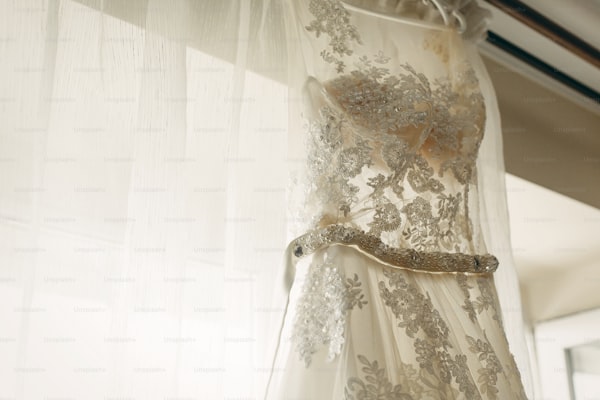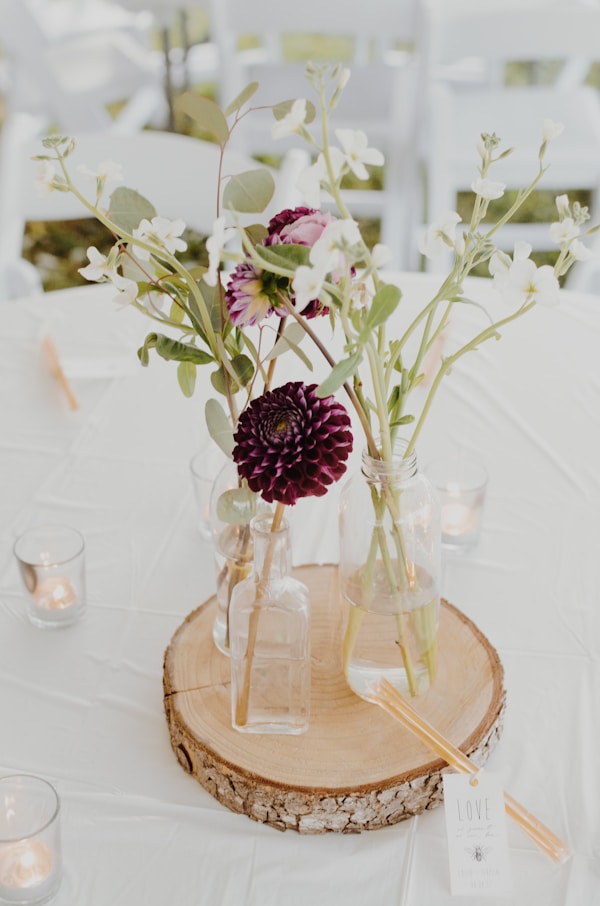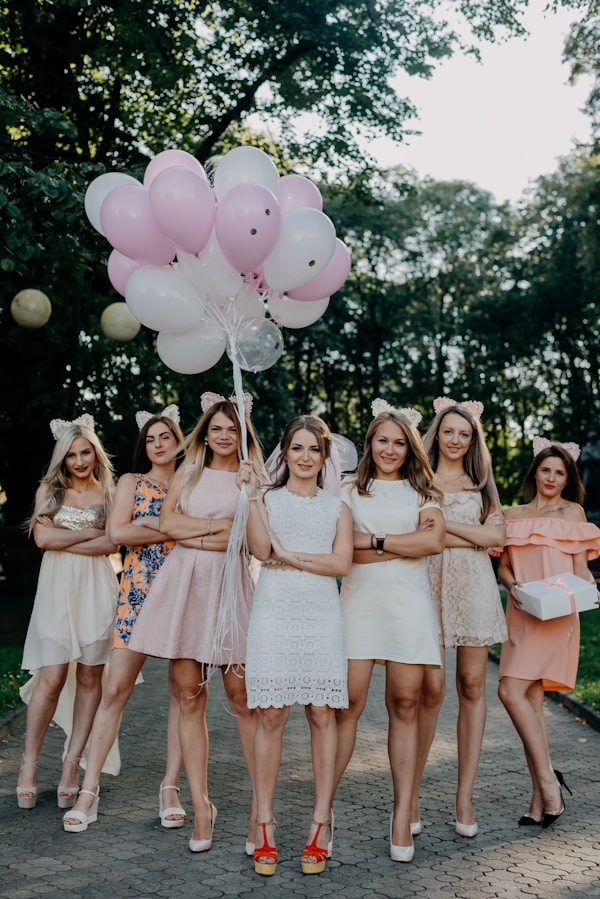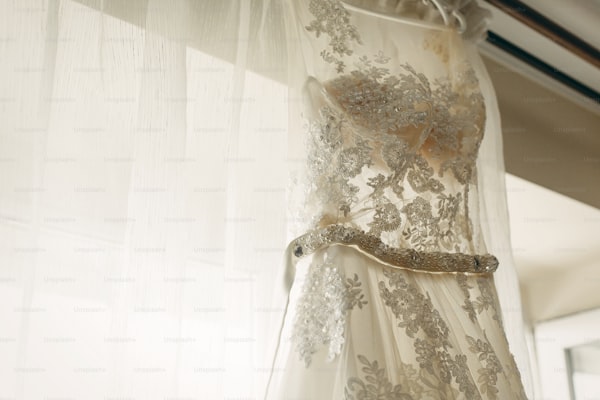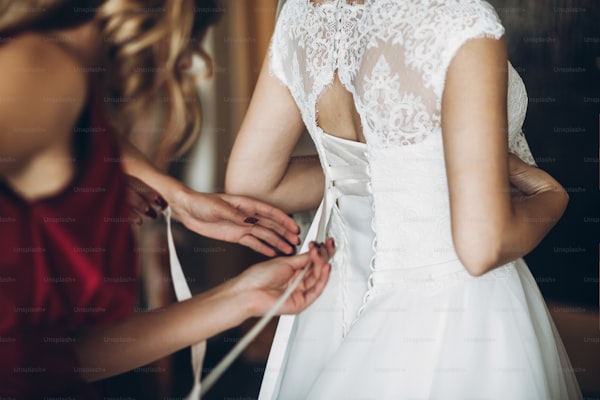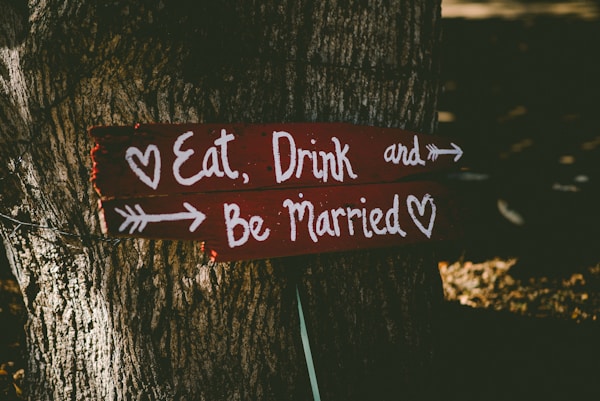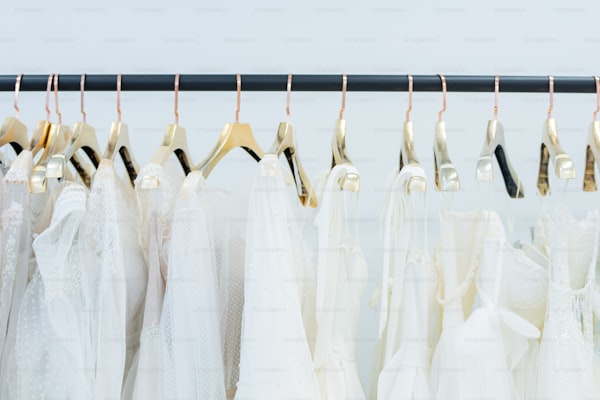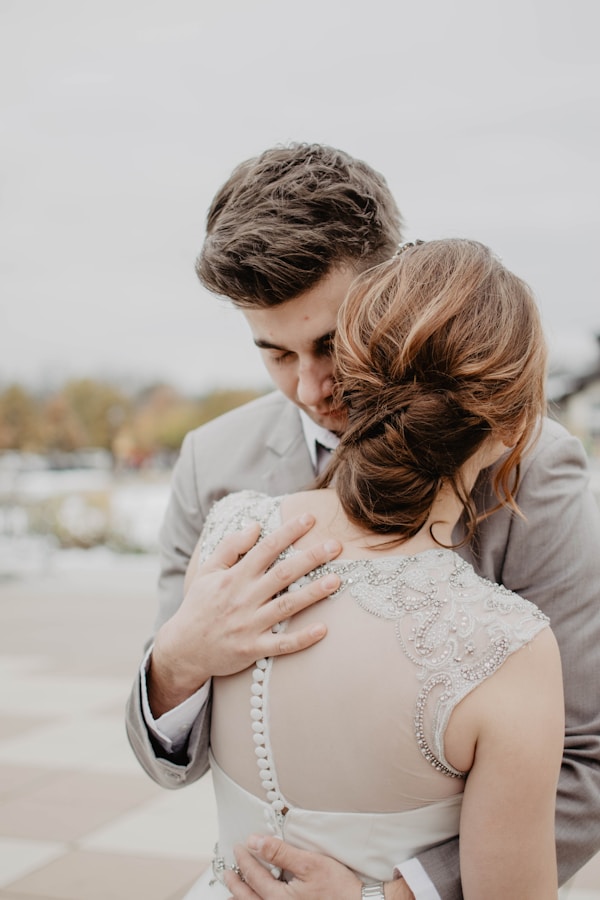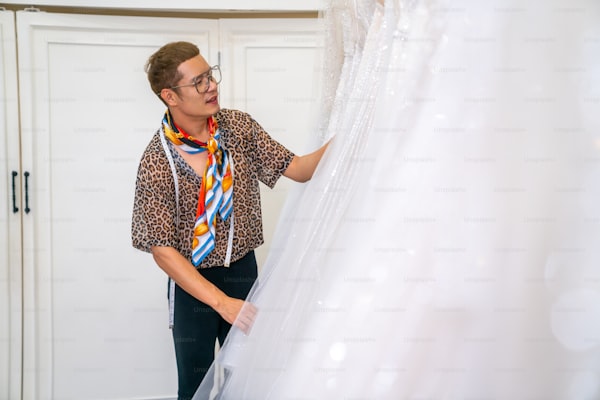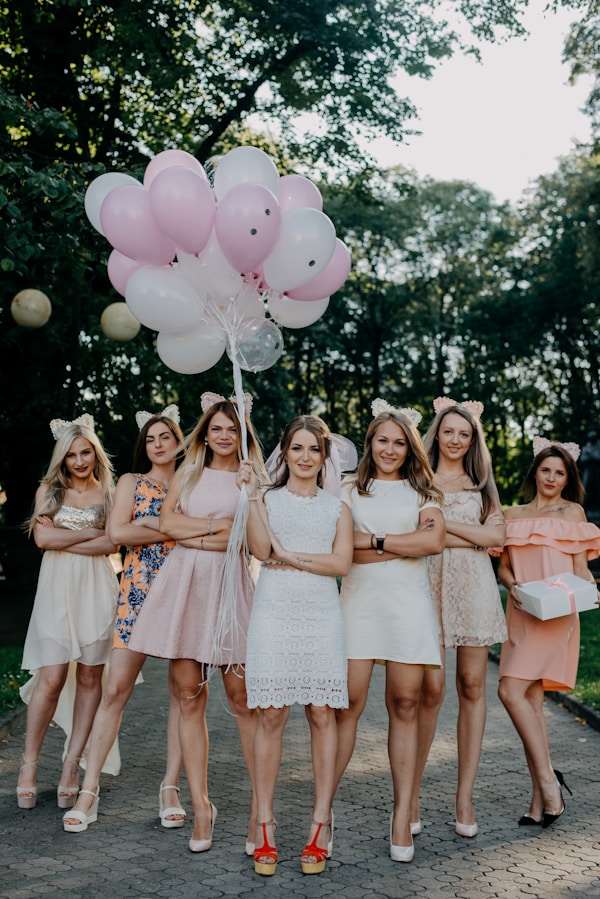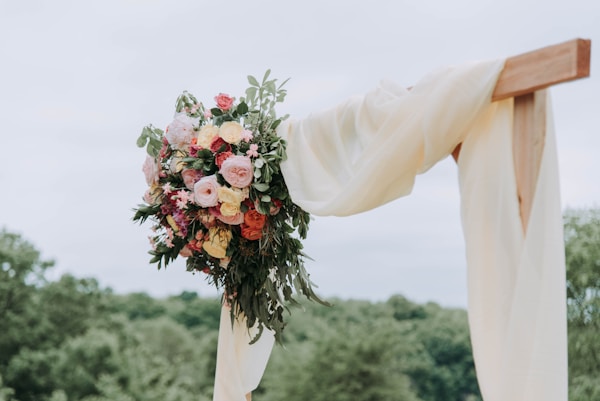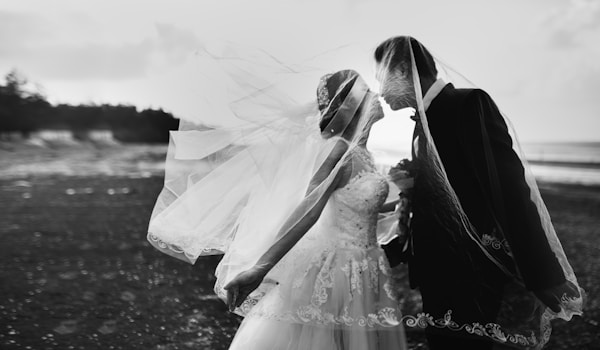Achieving the Dreamy Soft, Flowing Look in Wedding Dresses with Lightweight Fabrics
When it comes to wedding dresses, many brides envision a gown that embodies romance and elegance. The combination of lightweight fabrics with expert design techniques can create that ethereal, soft, flowing look, making any bride look breathtaking on her special day. In this article, we will explore how to achieve this stunning aesthetic using various lightweight fabrics, discuss suitable styles, and share tips that cater specifically to brides who are keen on a softer silhouette.The Allure of Lightweight FabricsLightweight fabrics are often the best choice for brides looking to create a soft and airy silhouette. Not only do they lend themselves to flowing designs, but they are also comfortable and breathable, important factors for a long day of celebration. Some of the most popular lightweight fabrics include: Chiffon: A sheer, delicate fabric that moves beautifully with the body. Organza: A lightweight, crisp fabric that adds structure while maintaining a flowy appearance. Tulle: Perfect for layering, creating soft volume without adding weight. Lace: Often used as an overlay, lace adds texture and elegance. Silk: Known for its luxurious feel and natural drape, silk is a staple for elegant gowns.Choosing the Right SilhouetteThe silhouette of your wedding dress plays a crucial role in achieving that soft and flowing look. Here are a few styles to consider:SilhouetteDescriptionA-LineA fitted top gradually flares out to form an A-shape, ideal for a soft look.Ball...
Ultimate Guide: What Methods Are Used to Preserve the Brightness of White Fabrics in Wedding Dresses?
Wedding dresses are often iconic symbols of love, tradition, and timeless beauty. For brides, the pristine brightness of white fabrics in their wedding dresses is a significant aspect of their special day. However, maintaining that bright, elegant appearance over time can be a challenge. In this extensive guide, we will explore the most effective methods used to preserve the brightness of white fabrics in wedding dresses, helping brides keep their gowns looking as stunning as the day they were worn.Understanding the Importance of Fabric BrightnessThe brightness of white fabrics is not just a matter of aesthetics; it plays a crucial role in the overall visual impact of the wedding dress. A bright white gown symbolizes purity and innocence, making it a traditional choice for brides. However, various factors, such as environmental exposure, improper cleaning, and aging, can cause the fabric to become dull or yellowed over time.Common Challenges to White Fabric BrightnessSeveral common challenges may affect the brightness of white fabrics in wedding dresses:ChallengesEffects on BrightnessEnvironmental ExposureSunlight and humidity can cause fabrics to yellow.Poor Cleaning PracticesImproper washing methods can lead to discoloration.Aging of FabricsLack of maintenance can reduce the gown's brightness over time.Methods to Preserve White Fabric Brightness1. Proper Cleaning TechniquesOne of the most crucial steps in preserving the brightness of white fabrics is proper cleaning. It is ...
Designing a Wedding Dress with Intricate Beadwork: Balancing Beauty and Comfort
Creating a wedding dress is one of the most exciting yet challenging tasks for any designer. One of the significant questions that arise during the design process is: How do you design a wedding dress with intricate beadwork without compromising comfort? This article explores the art of designing such a dress while maintaining an ideal balance between style and comfort.The Essence of Wedding Dress DesignWedding dresses have evolved through centuries. From the simple, flowing gowns of the past to today’s elaborate designs full of intricate details, designers face the task of incorporating both stunning aesthetics and wearability. The primary goal should be to make the bride feel beautiful and comfortable on one of the most important days of her life.Understanding BeadworkBeadwork adds a luxurious and eye-catching element to any garment, especially wedding dresses. However, the challenge lies in how to incorporate it seamlessly without sacrificing comfort. Here are some key factors to consider:FactorDescriptionWeight of BeadsChoosing lightweight beads can reduce the overall weight of the dress.Fabric ChoiceSoft, breathable fabrics can enhance comfort while showcasing beadwork.Bead PlacementStrategically placing beads in less-frequented areas can prevent discomfort.Movement ConsiderationsEnsuring the dress allows for fluidity and ease of movement is crucial.Choosing the Right FabricsThe foundation of any stunning wedding dress begins with the right choice of fabric. Some popular...
What Are the Steps for Creating a Mermaid-Style Wedding Dress? Your Ultimate Guide
Planning a wedding involves countless details, and one of the most important decisions for brides is choosing the perfect wedding dress. Among the myriad styles available, a mermaid-style wedding dress stands out for its flattering silhouette and modern look. This article will guide you through the steps for creating a beautiful mermaid-style wedding dress, ensuring your big day is as special as you've always dreamed.What Is a Mermaid-Style Wedding Dress?A mermaid-style wedding dress is characterized by its fitted bodice that flares out at or below the knee, resembling the shape of a mermaid’s tail. This style accentuates the curves and creates a dramatic effect as you walk down the aisle. Before diving into the steps of creating your own, it is essential to understand the different components that make up this iconic dress.Components of a Mermaid-Style Wedding DressComponentDescriptionBodiceFitted and often adorned with lace, beading, or other detailing.SkirtFlares out from the knee, creating a dramatic shape.TrainA longer back portion that adds elegance and drama.FabricCommon fabrics include satin, tulle, and lace for a luxurious feel.Step 1: Choose Your InspirationStart by gathering inspiration for your dress. Browse through wedding magazines, websites like Pinterest, or even bridal fashion shows. Consider what elements appeal to you, such as lace detailing, silhouette, neckline, and sleeve options. Save your favorite images and note down the specific aspects you love.Step...
How to Ensure a Perfect Fit for Your Wedding Dress After Significant Weight Changes
Planning for a wedding is an exciting time filled with joy and anticipation. Among the myriad of preparations, finding the perfect wedding dress stands out as one of the most crucial aspects. However, what happens when you experience significant weight changes before your big day? This article will guide you on how to ensure your wedding dress fits properly, even after you’ve undergone substantial shifts in your body weight.1. Understanding the Importance of a Proper FitA well-fitted wedding dress is essential for both comfort and aesthetics. A gown that fits incorrectly can detract from the beautiful design and may hinder your movement throughout the event. Moreover, it can affect your confidence as you walk down the aisle. Following weight changes, it’s crucial to assess your body and ensure your dress accommodates these changes.Why Weight Changes OccurWeight changes can occur for various reasons, and understanding these can help you prepare for your wedding dress fitting: Dietary Changes: Alterations in your diet can lead to rapid weight loss or gain. Exercise Regimens: Starting a new workout program may result in muscle gain or fat loss. Stress: Planning a wedding can be stressful, often leading to weight fluctuation. Health Issues: Hormonal changes or other medical conditions may affect body weight.2. Initial Steps to Take After Weight ChangesOnce you notice weight changes, here are some steps to help ensure your wedding dress will fit properly:Check Your Measurement...
Mastering the Art of Detachable Wedding Dress Trains: Techniques, Benefits, and Common Questions
Introduction to Detachable Wedding Dress TrainsWeddings are special, and every bride dreams of looking perfect on her big day. One aspect that can add elegance to a wedding dress is a train. However, the charm of a train can sometimes come with practical considerations. This is where detachable wedding dress trains come into play. In this article, we will explore the various techniques used to create detachable wedding dress trains, their benefits, and some common questions surrounding them.Why Choose a Detachable Train?A detachable train offers the best of both worlds: the dramatic effect of a long train during the ceremony and the convenience of a shorter dress for the reception. This versatility allows brides to make the most of their wedding gown.Common Techniques for Making a Wedding Dress Train DetachableThere are various methods employed by designers to create detachable trains. Here are some of the most popular techniques:TechniqueDescription1. Hooks and EyesThis is one of the most common methods where hooks and eyes are sewn into the fabric. The train can be secured at the waist, ensuring it stays in place during the ceremony.2. Snap ButtonsSnap buttons can provide a strong hold for the train and are often used for a clean finish. They can be added discreetly to keep the focus on the gown.3. Ties or RibbonsUsing ties or ribbons gives a softer look. These can be hidden within the dress and tied at the waist for a secure fit.4. ZippersSome designs incorporate zippers t...
How to Balance Modern Trends with Timeless Styles in Wedding Dress Design
Understanding the Essence of Wedding Dress DesignWedding dress design is a delicate interplay between modern trends and timeless styles. As the fashion industry continually evolves, brides are often left wondering how to embrace contemporary fashions while ensuring their wedding dress will remain elegant and relevant for years to come. In this article, we will explore the essential approach to striking a balance between modernity and tradition in wedding dress design, while providing insights into various aspects that brides should consider when selecting their dream dress.The Influence of Modern TrendsModern trends in wedding dress design often reflect broader shifts in societal values and cultural norms. For instance, the rise of body positivity has led to increased demand for diverse sizes and styles. Additionally, more brides are seeking dresses that defy traditional wedding dress norms, opting for non-white colors, unique fabrics, and bold silhouettes. Key trends currently shaping the market include:TrendDescriptionBohemian StylesLoose-fitting, flowy designs, often with lace and floral details.JumpsuitsA modern twist, providing a chic alternative to the traditional gown.Bold ColorsBrides are increasingly opting for colors like blush, navy, and even black.Minimalist DesignsSimple and elegant styles that focus on fabric quality and cut.Incorporating Timeless StylesWhile modern trends offer fresh perspectives, timeless styles have their charm that remains appealing across g...
Unlocking the Secrets: Methods for a Smooth Finish on Satin Wedding Dresses
What Methods are Used to Create a Smooth Finish on a Satin Wedding Dress?When it comes to weddings, every detail matters, especially the bride's gown. Satin wedding dresses are renowned for their luxurious and elegant appearance, yet achieving a flawless finish can be quite the challenge. This article will explore various methods used to create a smooth finish on satin wedding dresses, helping brides achieve their dream look for the big day.Understanding SatinSatin is a weave that creates a luxurious fabric with a glossy surface. It is often made from silk or polyester, providing a stunning aesthetic that many brides love. However, its smooth surface can also highlight imperfections, making it essential to understand how to achieve that perfect finish.Common Concerns with Satin FinishingBefore diving into methods, it's important to recognize common issues brides face with satin dresses: Wrinkles: Satin is prone to wrinkling, which can detract from its shine and overall look. Seams: Uneven seams can create an unprofessional appearance. Stains: Satin is sensitive to stains, which can be challenging to remove.Methods for Achieving a Smooth FinishTo ensure your satin wedding dress looks flawless, consider the following methods:1. Professional TailoringOne of the most effective ways to achieve a smooth finish is to enlist the help of a professional tailor. Expert seamstresses understand the intricacies of satin and can expertly alter your dress to ensure perfect seams and fit....
How to Select the Right Thread for Sewing a Wedding Dress: A Comprehensive Guide
Sewing a wedding dress is a monumental task that requires attention to detail and careful consideration of materials, especially thread. The thread you choose is crucial for the integrity, appearance, and overall quality of the dress. In this article, we will explore how to select the right thread for sewing a wedding dress, addressing important factors such as thread type, color matching, fabric compatibility, and sewing techniques.Understanding Thread TypesBefore diving into the selection process, it's essential to understand the different types of threads available in the market. Each type serves a unique purpose and is suitable for specific fabrics. Here’s a quick overview:Thread TypeBest ForCharacteristicsPolyester ThreadMost fabricsStrong, durable, and resistant to fadingCotton ThreadCotton fabricsSoft, natural look; can be less durableNylon ThreadStretchy fabricsFlexible and strong, great for fitted garmentsSilk ThreadLuxury fabricsLuxurious, smooth finish; ideal for delicate fabricsChoosing the Right Thread TypeChoosing the right thread type is the first step in ensuring your wedding dress turns out beautifully. For most wedding dresses, polyester thread is often the go-to choice due to its strength and versatility. It works well with various fabrics, making it suitable for the layers often found in wedding dresses.If your dress features delicate silk or satin, then silk thread is an ideal choice to complement the luxurious feel and drape of these fabrics. On the othe...
Unlocking Unique Fabric Textures: Techniques for Creating Stunning Wedding Dresses
Introduction to Unique Fabric Textures in Wedding DressesWhen it comes to wedding dresses, the fabric texture plays a crucial role in creating a bridal masterpiece that stands out. Designers and brides alike often seek out ways to achieve unique and exquisite fabric textures that reflect personal style and elevate the overall aesthetic. But what techniques are employed to create a wedding dress with a unique fabric texture? In this article, we will explore various techniques, materials, and creative inspirations that lead to those coveted textures in wedding gowns.Understanding Fabric Texture: The Foundation of a Stunning Wedding DressFabric texture refers to the surface quality of the material used in clothing, which can be visual, tactile, or both. For a wedding dress, the right fabric texture can enhance its elegance, add depth, and even portray a specific mood or theme. Several factors come into play, including the type of fabric, the weaving techniques, and the finishing methods. Let’s delve deeper into some of the most popular techniques used to create unique fabric textures.1. Weaving TechniquesWoven fabrics are a staple in bridal fashion. The method of weaving can significantly affect the texture of the fabric. Here are some commonly used weaving techniques:TechniqueDescriptionMikadoA blend of silk and nylon that adds structure and creates a crisp texture.Chantilly LaceIntricate lace with a delicate floral pattern, often used as overlays for a romantic touch.JacquardA...
How to Prevent Tulle from Tearing in a Wedding Dress: Essential Tips and Techniques
IntroductionWeddings are one of the most important milestones in a person's life, and the wedding dress holds a significant place in this beautiful occasion. Tulle, a delicate and lightweight fabric often used in wedding dresses, adds an ethereal touch to the overall design. However, its sheer nature makes it susceptible to tearing. In this article, we will explore effective methods to prevent tulle from tearing in a wedding dress, while also addressing common concerns and questions regarding tulle maintenance.Understanding Tulle and Its Common IssuesTulle is a net-like fabric typically made from nylon, polyester, or silk. It is favored for its lightness and versatility, often used in skirts, veils, and decorations. However, due to its fragile composition, tulle can easily snag or tear, especially in high-stress areas such as seams or edges. Some common factors contributing to tulle tearing include: Friction: Excessive rubbing against other fabrics or surfaces can weaken tulle over time. Improper Storage: Folding or mishandling tulle can lead to creases that may cause tearing. Fastening Techniques: Using the wrong methods to secure tulle can create undue stress on the fabric.Preventative Measures for Tulle TearingBelow are several practical tips to help you preserve the integrity of tulle in your wedding dress:MethodDescription1. Choose Quality TulleOpt for thicker tulle made from durable materials to reduce the risk of tearing.2. Proper Store Your DressHang your wed...
Essential Considerations for Designing a Wedding Dress for Colder Climates
When planning a winter wedding, choosing the right wedding dress is critical. Couples often focus on venues, catering, and guest lists, but the bride's attire deserves equally careful consideration. Especially in colder climates, where temperatures can drop significantly, the design of the wedding dress can impact not only the aesthetic appeal but also the comfort of the bride. In this article, we will explore the key considerations for designing a wedding dress suitable for colder climates and provide helpful tips for brides-to-be.Factors to Consider When Designing a Wedding Dress for Cold WeatherDesigning a wedding dress for colder climates necessitates a careful balance between style, warmth, and comfort. Below are some vital factors to consider:1. Fabric ChoiceThe fabric of the wedding dress is the most crucial factor when it comes to warmth. Consider materials that are thicker and more insulating. Here are some fabric suggestions:FabricDescriptionVelvetA luxurious fabric that provides warmth and richness in texture.BrocadeHeavy jacquard fabric, perfect for creating structured and opulent designs.Lace with LiningBeautiful for details, but ensure it has a warm lining to combat cold.Silk SatinLightweight but can be layered for added warmth while maintaining elegance.2. Dress LengthA longer dress not only adds elegance but also provides more coverage. Consider the following styles:Full-Length Gowns: Ideal for covering more skin, keeping the bride warmer.Three-Quarter Sleeves...
Creating the Perfect Wedding Dress: The Art of Combining Lace and Satin
How Do You Design a Wedding Dress with Both Lace and Satin Elements?Designing a wedding dress that elegantly incorporates both lace and satin elements is a journey that requires creativity, understanding of materials, and knowledge of current fashion trends. The contrast between the delicate feel of lace and the luxurious appearance of satin can create a stunning ensemble that appeals to every bride's aesthetic dreams. This article will guide you through the process of designing a wedding dress that beautifully marries these two exquisite fabrics.Understanding Lace and Satin: Characteristics and UsesBefore diving into the design process, it’s essential to understand the characteristics of lace and satin. Here are some key points to consider:MaterialCharacteristicsLaceDelicate, intricate patterns; often sheer; adds texture and elegance.SatinSmooth, glossy finish; heavier drape; offers a luxurious feel; adds structure.Choosing the Right Types of Lace and Satin for Your DesignWhen it comes to designing a wedding dress, the choice of lace and satin is crucial. Lace can vary widely in texture, pattern, and weight. Options include:Chantilly Lace: Soft and delicate, perfect for romantic designs.Venise Lace: Heavier and more structured, ideal for detailed embroidery.Alençon Lace: A combination of floral motifs with embroidered edges, adding sophistication.For satin, consider the following types:Duchess Satin: A heavier option that provides structure and support.Charmeuse Satin: Light...
Exploring the Craftsmanship: What Methods Are Used to Create a Wedding Dress with a High Collar?
In recent years, the trend of wedding dresses has evolved, with brides increasingly opting for elegant designs that feature distinctive elements. One such design is the wedding dress with a high collar, which combines sophistication with vintage charm. This article delves into the various methods used to create these stunning garments, highlighting their unique attributes and offering insights into the craftsmanship involved.Understanding High Collar Wedding DressesA high collar wedding dress typically draws inspiration from vintage styles, including Victorian and Edwardian fashion. These dresses are characterized by their elegant necklines that rise above the collarbone, often enhancing the overall silhouette. Creating such dresses involves a combination of traditional sewing techniques, innovative fabric choices, and meticulous attention to detail.Key Methods in Creating High Collar Wedding DressesDesigning a wedding dress with a high collar requires a careful selection of fabrics, patterns, and sewing techniques. Below are some of the most common methods employed in this intricate process:MethodDescription1. Fabric SelectionThe foundation of any wedding dress is its fabric. Popular choices for high collar dresses include satin, silk, lace, and tulle. The choice of fabric impacts the dress's silhouette and overall look.2. Pattern MakingCreating a high collar design starts with drafting the right patterns. The collar must be proportionate to the rest of the dress, and design...
Mastering Alterations for a Wedding Dress with Layers of Organza
Understanding Organza Layers in Wedding DressesWhen it comes to planning a wedding, choosing the perfect dress can be both exciting and daunting. One of the most elegant fabrics used in wedding dresses is organza, known for its sheer quality and ability to add volume to the gown. However, with its beauty comes challenges, especially when it comes to alterations. In this article, we will explore how to effectively handle alterations for a wedding dress with layers of organza, ensuring your big day is as perfect as you envision.1. Why Choose Organza for Your Wedding Dress?Organza is a lightweight, sheer fabric that is stiffer than many other materials, allowing it to hold shapes beautifully. It is available in a variety of colors, though traditional white or ivory is most popular for weddings. The fabric’s translucent quality adds a touch of ethereal beauty and elegance, making it the top choice for many brides. Here are some key advantages:Advantages of OrganzaLightweight and comfortableElegant drapingDurable and long-lastingAvailable in various colors2. Preparing for AlterationsBefore you embark on the process of altering your wedding dress, it’s important to prepare adequately. Here are several steps you should consider:2.1 Find a Skilled SeamstressWhen dealing with organza, it’s crucial to find a seamstress with experience in handling delicate fabrics. A skilled professional can make the necessary adjustments without compromising the integrity of the fabric.2.2 Schedule Alt...
Techniques for Creating Stunning Wedding Dresses with Cinched Waists
Understanding Cinched Waists in Wedding Dress DesignWhen it comes to wedding dresses, the silhouette can make all the difference. Among the various styles, dresses with a cinched waist stand out for their ability to highlight the bride’s figure. But what exactly are the techniques used to create this chic and elegant look? In this article, we will explore the craftsmanship behind wedding dresses with cinched waists, offering insights into design techniques, materials, and styling tips that can help you achieve the perfect bridal gown.1. The Importance of the Cinched WaistA cinched waist not only flatters the bride's figure but also adds an element of sophistication to the gown. This feature can create an hourglass shape, enhancing curves and providing a more tailored appearance. For many brides, this silhouette symbolizes elegance and romanticism, making it a top choice for weddings.2. Techniques Used to Create a Cinched WaistDesigning a wedding dress with a cinched waist requires a combination of tailored construction, strategic draping, and the right fabric choices. Let’s delve into the techniques that designers commonly use:2.1 Draping and Pattern MakingDraping is a crucial technique that involves arranging the fabric on a dress form to create the desired silhouette. Designers often use muslin fabric to experiment with various styles and cuts before finalizing the pattern. This technique allows for adjustments in how the fabric flows and how the waist is cinched. The goal ...
How to Ensure the Fabric of a Wedding Dress Stays Smooth During Sewing: Tips and Techniques
IntroductionSewing a wedding dress is a beautiful yet challenging process. To create a stunning gown, you must maintain the fabric's smoothness during the sewing process. In this article, we will explore effective techniques and essential tips to ensure that the fabric of a wedding dress stays smooth throughout the sewing process, enhancing its overall beauty and quality.Why Is Fabric Smoothness Important in Wedding Dress Sewing?The smoothness of the fabric is crucial when sewing a wedding dress for several reasons: Visual Appeal: A smooth fabric ensures that the wedding dress looks elegant and expensive. Construction Integrity: Smooth fabric helps in achieving precise seams and hems. Comfort: A well-sewn dress allows the bride to move freely without irritation.Types of Wedding Dress FabricsWhen sewing a wedding dress, it’s essential to recognize the types of fabrics typically used:Fabric TypeCharacteristicsSatinLuxurious, smooth finish, may slip easily.TulleLightweight, delicate, can be challenging to handle.LaceIntricate patterns, requires careful handling.OrganzaStiff, holds shape well but can fray.Tips for Keeping Fabric Smooth During SewingMaintaining the smoothness of your fabric is attainable with these practical tips:1. Choose the Right ToolsHaving the correct sewing tools can significantly impact the smoothness of your wedding dress fabric. Invest in a high-quality sewing machine with adjustable tension, sharp needles appropriate for your chosen fabric, and ...
Achieving the Perfect Fit: Methods for a Wedding Dress with a Low Back
The Quest for Perfection: Low-Back Wedding DressesChoosing the perfect wedding dress is one of the most exciting aspects of wedding planning. For many brides, a dress with a low back embodies elegance and romance. However, achieving the perfect fit for such a design can be a challenge. This article will explore various methods to ensure your low-back wedding dress fits flawlessly. We will delve into tailoring techniques, different types of fabrics, and tips for accessorizing, while also addressing common concerns brides may have.Understanding the Importance of FitThe fit of your wedding dress can significantly impact your overall look and comfort on this special day. A low-back design creates a stunning visual appeal but can often lead to issues such as sliding straps, gaping fabric, or discomfort. To achieve the desired look without compromising comfort, various methods can be employed. Let's explore these in greater detail!1. Choose the Right FabricOne of the most crucial factors in achieving a perfect fit is the fabric used in the dress. Fabrics with some elasticity can help the dress hug your curves better, while structured fabrics can provide support. Here are some popular choices:Fabric TypeCharacteristicsBest ForSilkLuxurious, soft, and drapes beautifullyClassic stylesChiffonLightweight, airy, and flexibleRomantic designsTulleStructured, adds volume, and has a whimsical feelBall gownsStretch SatinElasticity provides comfort and a snug fitContemporary silhouettes2. Tail...
Designing an Easy-to-Travel Wedding Dress: A Comprehensive Guide
Introduction: The Ultimate Challenge of Travel-Friendly Wedding DressesPlanning a wedding is often a whirlwind of emotions, excitement, and, importantly, logistics. One major consideration that brides face, especially those getting married in a destination location, is the design of a wedding dress that is easy to travel with. How do you design a wedding dress that is both stylish and practical? In this article, we will explore innovative design elements, fabrics, and tips that make traveling with your dream gown stress-free.The Importance of Travel-Friendly Wedding DressesWhen you're planning a wedding, especially if it involves travel, the practicality of your wedding dress can't be overlooked. Traveling with a heavy, bulky gown can be cumbersome and stressful. You want a dress that looks beautiful in photos but also withstands the rigors of travel. Here’s why focusing on a travel-friendly wedding dress is vital: Convenience: A lightweight and manageable dress is easy to carry, whether it’s in the car or on a plane. Preservation: Travel-friendly gowns are less likely to wrinkle or get damaged during transit. Comfort: A dress designed for movement can enhance your overall comfort on your big day, especially in outdoor settings.Key Factors in Designing a Travel-Friendly Wedding DressHere are several crucial factors to consider when designing a wedding dress that is easy to transport:1. Fabric SelectionThe choice of fabric significantly impacts the dress's transportab...
Discover the Art of Creating a Wedding Dress with a Detachable Skirt
Unlock the Magic of Detachable Skirts in Wedding DressesWedding dresses come in a myriad of styles, designs, and fabrics, allowing modern brides to express their individuality on one of the most important days of their lives. One of the trending elements in bridal fashion is the detachable skirt, which offers versatility and style. This article dives deep into the techniques used to create stunning wedding dresses with detachable skirts, exploring the craftsmanship that makes each piece unique.Understanding Detachable SkirtsDetachable skirts add a layer of flexibility for brides, allowing them to transform their look throughout their wedding day. A bride can start with a dramatic look for the ceremony and then transition into something lighter for the reception. But how exactly are these designs achieved? Let’s take a closer look at the techniques involved in creating such innovative dresses.1. Fabric SelectionThe first step in crafting a wedding dress with a detachable skirt is the careful selection of fabrics. Different materials can dramatically affect both the design and the comfort of the dress. Common fabrics include: Fabric Characteristics Satin Shiny, smooth, and luxurious feel; often used for its elegance. Tulle Lightweight, airy, and often used for volume and layers. Lace Delicate and intricate; adds texture and romantic touch. Mikado A blend of silk and nylon; provides structure while remaining soft.A skilled designer will select fabric based on the desir...




